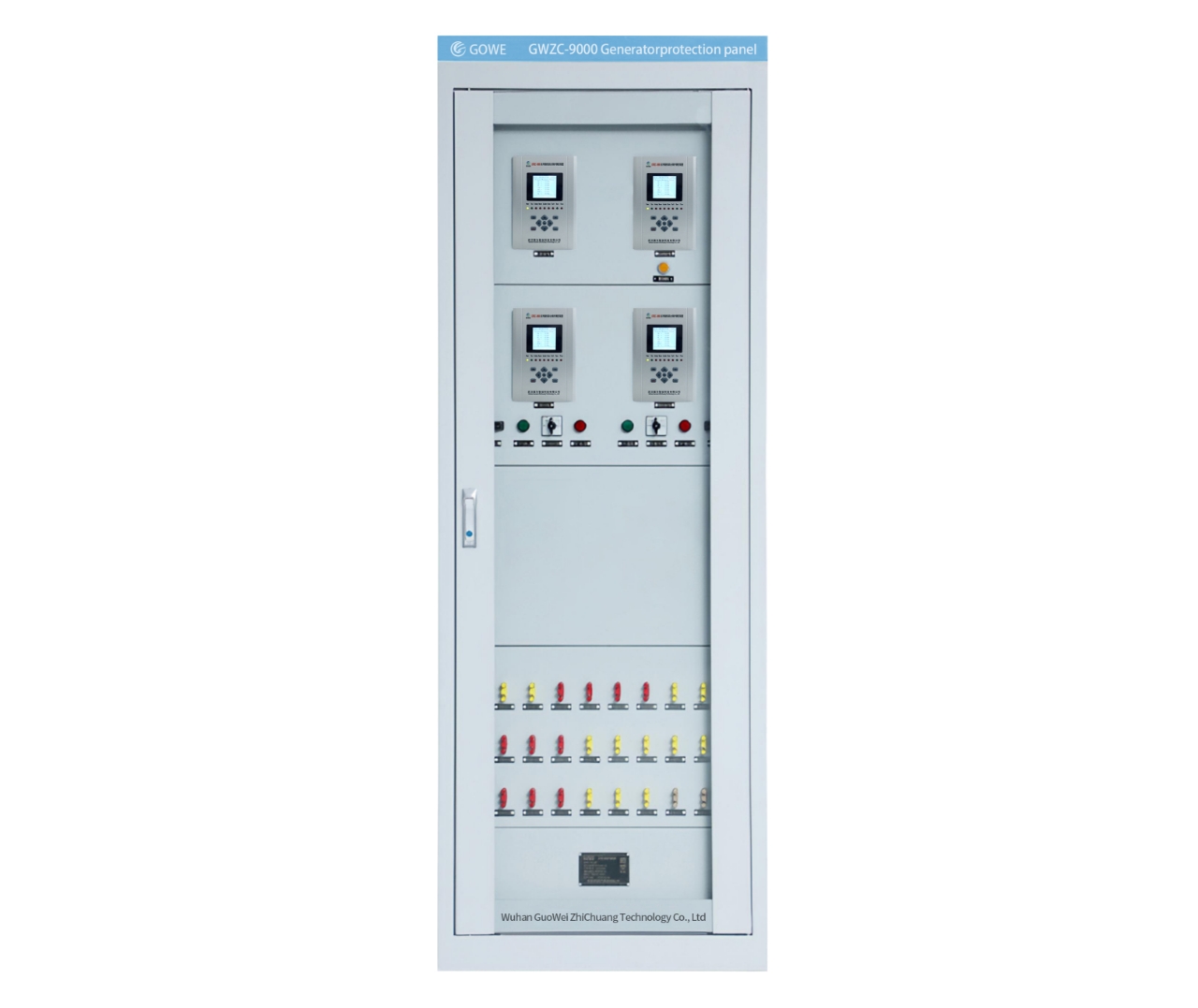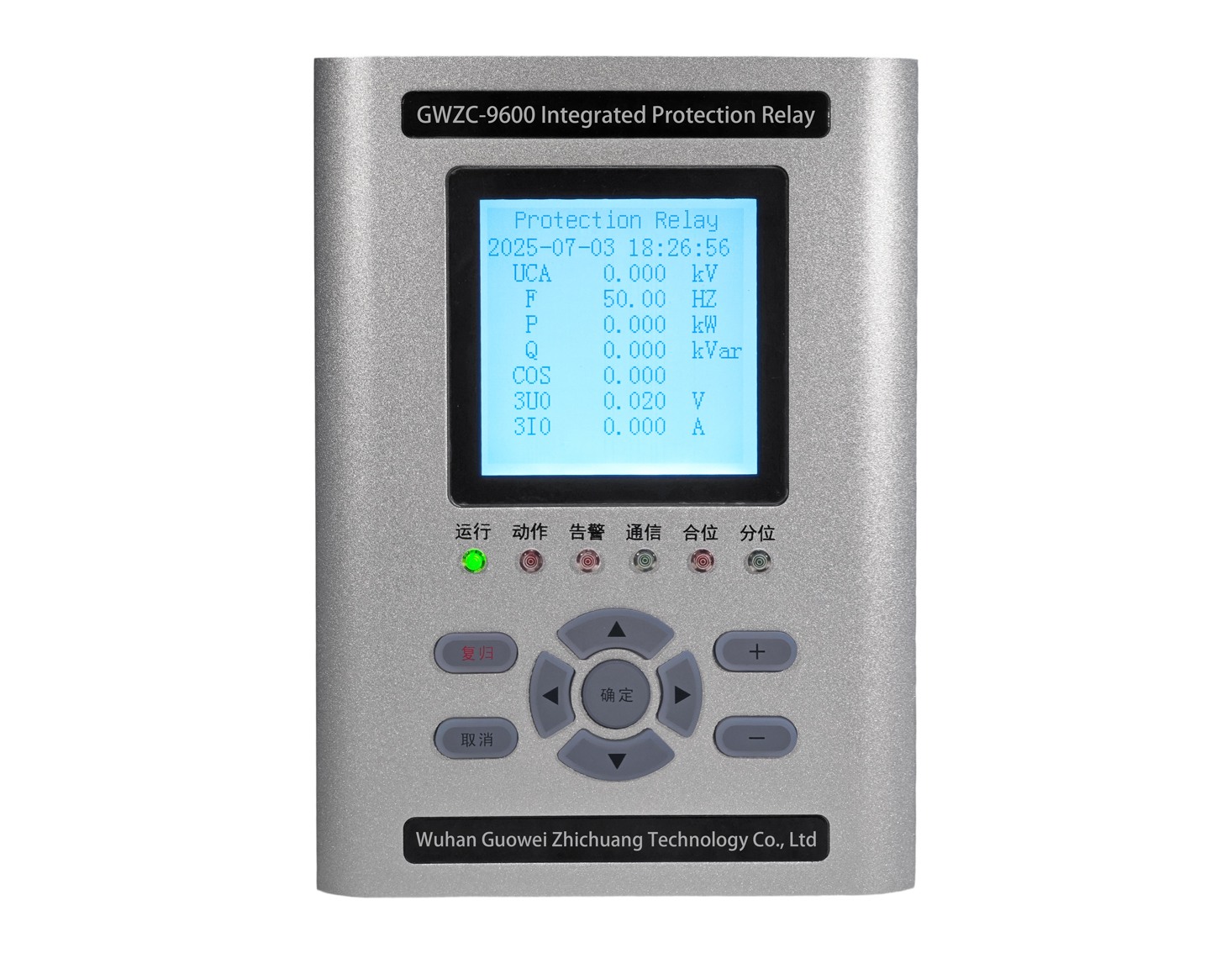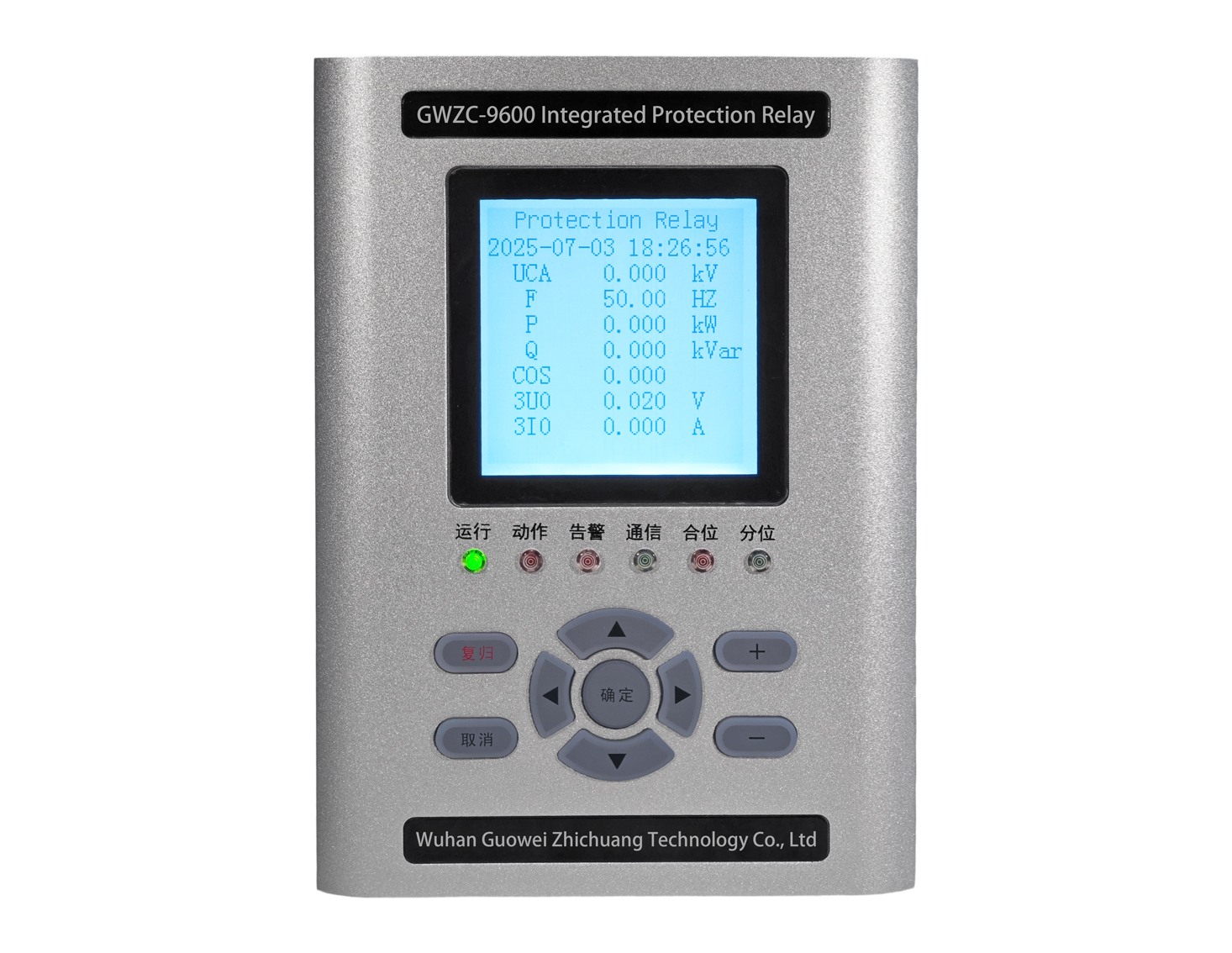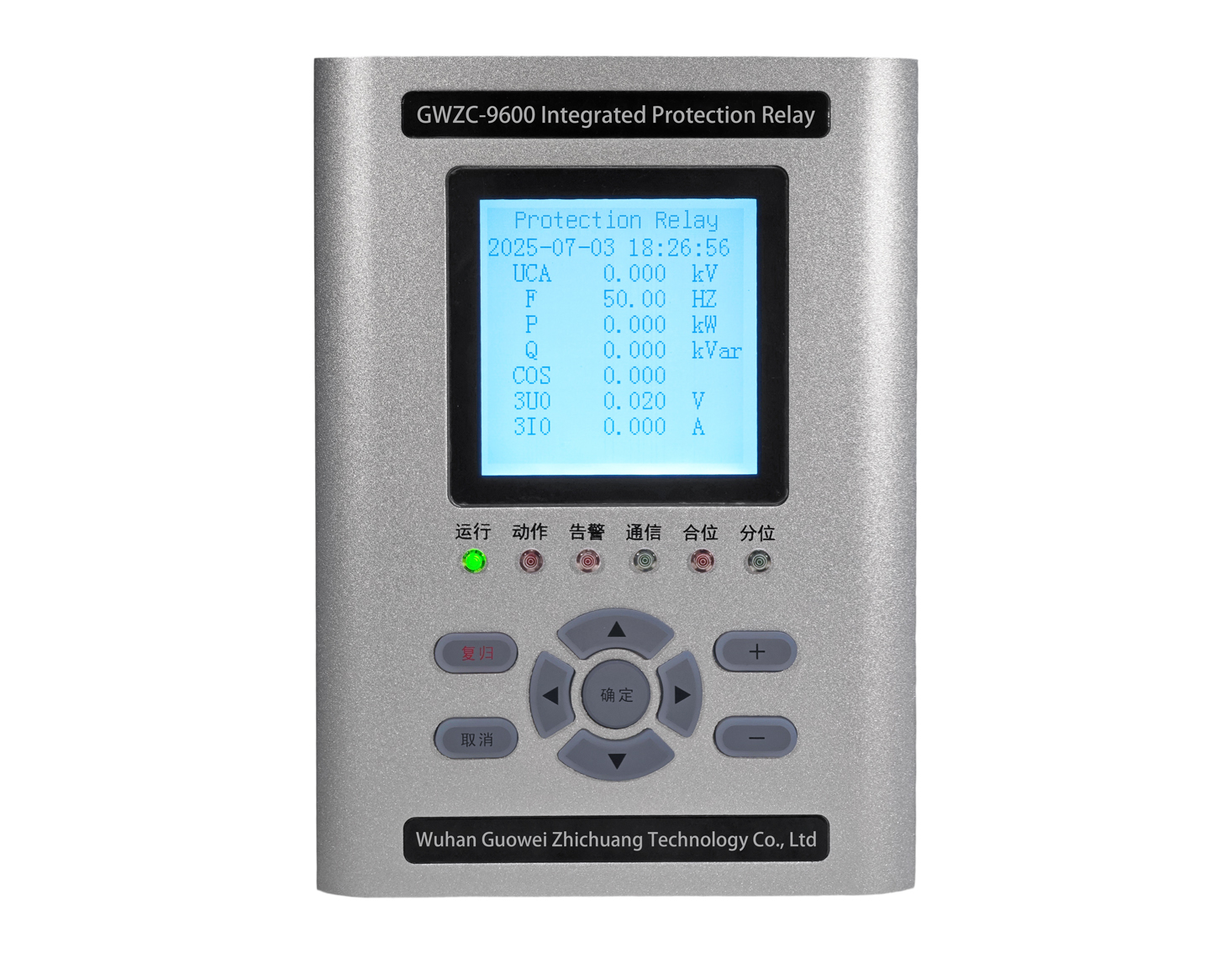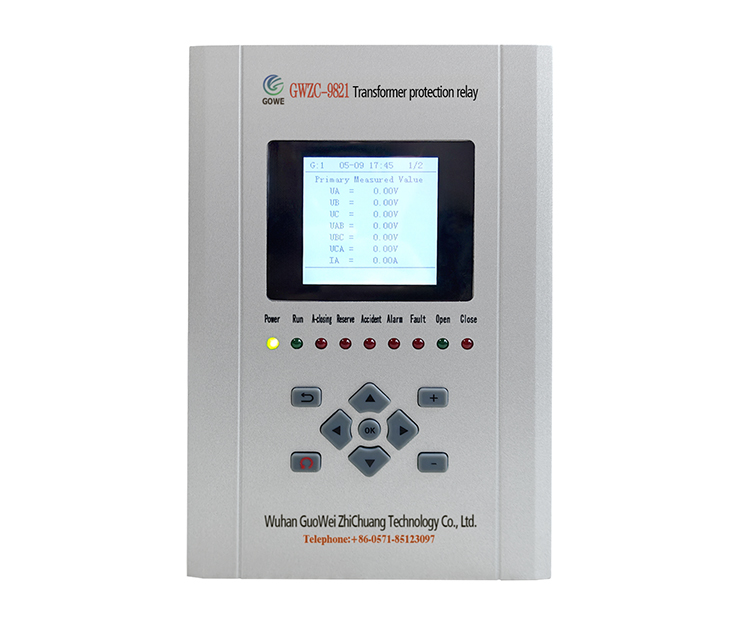
In our previous session, we covered the working principle, function, and setting calculation of generator Underfrequency Protection. Today, we will discuss the working principle, function, and setting calculation of generator Underfrequency Protection, as detailed below:
1. Generator Overfrequency Protection/Working Principle
Generator Overfrequency Protection, internationally standardized under ANSI/IEEE C37.2 as code 81O, operates on the core principle of continuously monitoring the AC voltage frequency at the generator terminals or the point of interconnection.
The protection is activated when the monitored frequency exceeds a predefined setpoint and remains there for a specific duration, triggering an alarm or executing a control action such as tripping.
Relationship between Frequency and Speed: For a synchronous generator, the output electrical frequency f is directly proportional to the rotor speed N and the number of pole pairs P (f = (P * N) / 120). Therefore, an increase in system frequency directly indicates an increase in the prime mover (turbine) speed, signifying that the mechanical input power exceeds the electrical output power (system load demand).
Root Cause of Frequency Rise: This typically occurs due to an excess of active power in the system. This happens when there is a sudden, significant drop in load (e.g., disconnection of a large load, system separation into an island due to a tie-line trip) while the prime mover’s power output fails to reduce correspondingly and promptly. Due to governor characteristics, the remaining online generators will absorb the excess power by increasing their rotational speed (thus raising the frequency).
Protection Timing Characteristics: Overfrequency protection typically employs an Inverse Time or Multiple Definite Time Stage characteristic.
Inverse Time: The higher the frequency, the greater the power surplus and the threat of mechanical stress on the generator, leading to a shorter allowed time delay. This characteristic better aligns with the turbine’s overspeed stress model.
Multiple Definite Time Stages: Several different frequency thresholds are set, each with a fixed time delay, used for staged actions such as alarm first, then reduction of prime mover power, and finally trip.
2. Generator Overfrequency Protection/Purpose
The generator overfrequency protection serves two primary critical functions:
①Preventing Mechanical Damage Caused by Unit Overspeed
This is the most direct purpose. Excessive rotational speed (corresponding to overfrequency) subjects rotating components to immense centrifugal forces, which may exceed their mechanical design limits, causing catastrophic damage such as blade failure or rotor damage.
The mechanical strength of the turbine and generator rotor has a safe operating range. Overfrequency/overspeed protection is key to ensuring this range is not exceeded.
②Maintaining System Frequency Stability and Preventing Islanded System Collapse
When a portion of the system (containing generation and load) becomes separated from the main grid, forming an “island,” if the generation within the island far exceeds the load demand, the frequency will rise sharply. Overfrequency protection stabilizes this islanded system by tripping selected generators to rapidly reduce the generation within the island, allowing the frequency to return to normal, thereby preventing a complete collapse due to uncontrolled frequency.
In this scenario, it is a vital component of the system’s frequency stability control scheme.
3. Generator Overfrequency Protection/Setting Calculation
The objective of setting calculation is to implement the most appropriate control action while ensuring the mechanical stress limits of the generator and prime mover are not exceeded, and while coordinating with the governor, the unit’s Coordinated Control System (CCS), and system-side frequency control measures.
The settings primarily consist of two core parameters: the Frequency Setpoint (f_set) and the Time Delay (t_delay).
Step 1: Determine the Maximum Safe Frequency Limit
This data must be provided by the Turbine and Generator Manufacturer. It is based on the mechanical strength design of critical components like the rotor and blades.
Typically, the turbine’s emergency overspeed trip (mechanical) is set around 110% to 112% of rated speed (e.g., 3300 rpm for a 3000 rpm unit). The electronic overfrequency protection must operate before this mechanical protection.
For continuous operation or short-time overspeed, the manufacturer usually provides an “overspeed versus permissible time” curve.
Step 2: Coordinate with Unit Control Systems and System Protection
①Governor Speed Droop and Dead Band: The overfrequency protection settings should be set above the effective operating range of the governor’s primary frequency response (speed droop). For instance, if the governor begins to act, reducing inlet guide vanes/steam, at 50.2 Hz, the overfrequency alarm or delayed trip setting might be set at 50.5 Hz or higher.
②Unit Coordinated Control System (CCS): The CCS adjusts load setpoints relatively slowly; overfrequency protection needs to allow time for it to act.
③System Special Protection Schemes: If a special protection scheme exists (e.g., an islanding and generation rejection scheme for a specific transmission corridor), the generator’s inherent overfrequency protection should coordinate with it, typically acting as a backup.
Step 3: Determine the Protection Characteristic and Settings
Common Method: Based on the Manufacturer’s Overspeed Withstand Curve
Example (for a 50Hz system):
①Obtain Manufacturer’s Curve: Assume the manufacturer specifies:
At 51.5 Hz, continuous operation is permitted for no more than 5 minutes.
At 52.0 Hz, continuous operation is permitted for no more than 30 seconds.
At 55.0 Hz (corresponding to 110% overspeed), immediate tripping is required.
②Set Frequency Stages and Delays: Based on this data and coordination principles, a multi-stage protection scheme can be set.
Stage 1: Alarm or Initiate CCS Load Reduction (ANSI 81O-1)
f_set1 = 50.5 Hz
t_delay1 = 2-5 seconds (This delay rides through transient swings and allows time for the governor/CCS to respond)
Action: Issue an alarm and can automatically initiate CCS to reduce load at the maximum rate.
Stage 2: Delayed Trip (ANSI 81O-2)
f_set2 = 51.5 Hz
t_delay2 = 60 seconds (Significantly shorter than the manufacturer’s allowed 5 minutes, providing a safety margin)
Action: Generator trip. This stage handles severe situations where the governor and CCS have failed to control the frequency effectively.
Stage 3: Fast Trip (ANSI 81O-3)
f_set3 = 52.5 Hz (This value must be well below the mechanical emergency overspeed trip setting, e.g., 55.0 Hz)
t_delay3 = 0.1 ~ 0.5 seconds (or instantaneous)
Action: Immediate generator trip. This stage addresses the most dangerous overfrequency conditions, such as an islanded system with nearly zero load.
Step 4: Consider Blocking and Logic
Load Level Blocking/Enhancement: In some designs, when the generator output power is very low (e.g., less than 10% Pn), the time delays for overfrequency protection can be shortened, as frequency rises faster in an islanding condition under low load.
Circuit Breaker Status: Like underfrequency protection, it is typically enabled only when the generator is synchronized to the grid (GCB closed).
Summary Setting Example:
Protection Function: Overfrequency Protection (ANSI 81O)
Typical Settings:
Stage 1 (81O-1): f_set = 50.5 Hz, t_delay = 3 seconds -> Action: Alarm & Load Reduction
Stage 2 (81O-2): f_set = 51.5 Hz, t_delay = 60 seconds -> Action: Trip
Stage 3 (81O-3): f_set = 52.5 Hz, t_delay = 0.2 seconds -> Action: Trip
Blocking Condition: Automatically disabled when the Generator Circuit Breaker is open.
Important Notes:
Primary Basis: The fundamental reference for all setting calculations is the official overspeed withstand curve provided by the turbine and generator manufacturer. The protection curve must lie below this manufacturer’s curve.
System Studies: For power stations susceptible to islanding, the overfrequency protection settings should be studied using power system dynamic simulations to verify their coordination and effectiveness.
Action Strategy: The action for overfrequency protection is not necessarily an immediate trip. A graded strategy of “Alarm -> Automatic Load Reduction -> Trip” helps maintain power supply reliability where possible, while ensuring safety.
